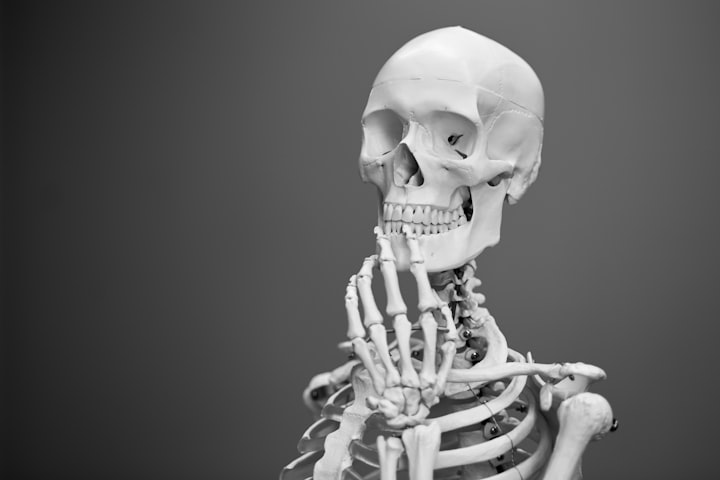Are Cell Phones Mutating the Shape of Our Bones?
Understanding the Relationship between Technology and Skeletons

Imagine a world where cellphones possess such immense power that they can actually alter the structure of our bones. This astonishing concept has recently garnered widespread attention across various media platforms. It originates from a scientific report suggesting that the use of phones and tablets can have profound and enduring effects on our bodies, albeit not in the way one might initially assume.
Over the past few years, David Shahar and Mark Sayers, experts in biomechanics from Australia's University of the Sunshine Coast, conducted a study on this intriguing subject. Biomechanics explores how mechanical principles apply to living organisms, encompassing everything from human locomotion to the flight patterns of insects. Shahar and Sayers' study also delved into osteobiography, a field that deduces details about an individual's life based on their skeletal remains.
It has long been known that skeletons adapt to a person's lifestyle, with each set of bones revealing its own narrative. For instance, on the Pacific island of Tinian in 1924, researchers discovered unusually large skeletons. The presence of stone structures near the remains explained the robust nature of the islanders' bones, as they had naturally developed stronger arms, legs, and collarbones from working with heavy stones.
Shahar and Sayers, working in Australia, propose that modern technology is shaping the skeletons of young people. So how is this happening? It all revolves around something called an external occipital protuberance (EOP), which some experts and commentators have colorfully likened to a "foam ball" or a "devil-like horn." In reality, the EOP is a bone growth located at the back of the skull, connected to the nuchal ligament—an important ligament that links neck muscles to the skull. The EOP acts like an anchor at the top of the nuchal ligament.
Now, let's revisit the researchers' actual objectives. By analyzing X-rays taken by chiropractors of individuals ranging from 18 to 86 years old, Shahar and Sayers aimed to gain a contemporary understanding of how skeletons change. Many of these X-rays were taken to investigate neck pain, and the researchers were interested in uncovering the potential consequences of these changes on our health.
Shahar and Sayers observed that the EOP appeared to be more prevalent among young people. They hypothesized that the posture adopted by the younger generation while constantly using their phones and tablets played a significant role. When engaged in screen time, the neck instinctively leans forward, resulting in additional pressure on the area where the skull meets the spine. To compensate, the EOP gradually elongates, growing by several millimeters. This effect has been dubbed "text neck."
The study also revealed that text neck was primarily found in men. In 2016, Shahar and Sayers reported that 67% of men exhibited larger EOPs, compared to only 20% of women, based on a test group of 218 individuals. By 2018, they had expanded their sample size to 1,200 people, with males appearing to be five times more likely to develop these enlarged text necks.
But what impact does this have on humanity? While we often hear concerns about radiation from phones potentially being linked to cancer, can the use of mobile devices genuinely lead to significant health problems within our bodies? This new report has sparked debates on this very topic, as it is the first instance where experts explicitly point out how technology is affecting our physical well-being. Shahar and Sayers describe the elongated EOP as a degenerative process, implying that things will only worsen for young people if they continue their device usage. Additionally, there is also a condition known as "text thumb" or thumb arthritis, where the thumb can develop serious problems akin to carpal tunnel syndrome.
However, it's worth noting that some critics have scrutinized the study's focus on EOPs and its reference to them as "horns" or "spikes." These critics argue that the report lacks conclusive evidence and, like any scientific paper, makes assumptions. Archaeologists contend that elongated skull bones are not uncommon and are particularly prevalent in males. According to the detractors of these studies, there simply isn't enough concrete evidence to support the claim that cellphone usage is transforming individuals into characters resembling Hell boy.
So, are Shahar and Sayers onto something groundbreaking, or have they merely aligned existing facts with their own explanation? Regardless, there is no denying the significant impact technology has on our lives. The notion that future generations might undergo physical changes due to constant interaction with their devices is a pressing issue that demands attention. Ultimately, it will be the archaeologists of the future who determine the validity of these claims. Perhaps they will not find individuals with protruding spikes from their necks, but who knows? So, maybe it's time to spend a little more time enjoying nature and a little less time engrossed in digital games.






Comments
There are no comments for this story
Be the first to respond and start the conversation.